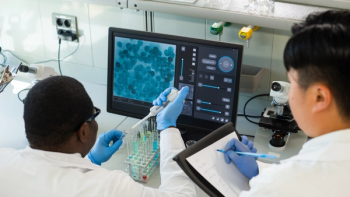
- Pharmaceutical Executive-05-01-2015
- Volume 35
- Issue 5
Refuting R&D Tax Credit Myths
Why executives should make the US R&D tax credit part of their planning discussions, by Chai Hoang and Chris Bard.
While companies are beginning to plan for the coming year and beyond, there is no time like the present for pharmaceutical executives to evaluate whether they’re taking full advantage of the research and development (R&D) tax credit. Recently, President Obama signed into law a bill that retroactively extends the R&D tax credit for expenses paid or incurred in 2014. Even with the potential of substantial benefits, many companies aren’t claiming these credits because of common misconceptions.
Let’s take a few moments to dispel the most common of these misconceptions.
Calculating the research tax credit just isn’t worth the time it takes
In 2011, the last year for which the IRS published data, U.S. corporations claimed $9.24 billion in R&D tax credits. Executives will find value in these dollar-for-dollar offsets against tax liability because the credits can help companies increase their cash flow and earnings per share, reduce their effective tax rate, hire more staff, develop new products, and finance other business objectives. Just how sizable can these benefits be? Federal and state research tax credits can equal 15% or more of a company’s qualified spending, and can result in substantial benefits for companies of any size. The credit can result in cash back for previous open tax years and can also represent future savings, as they can be carried forward up to 20 years.
We aren’t performing activities that are eligible for the credit
Traditional research activities that take place during the development of groundbreaking drugs aren’t the only activities that qualify for the R&D tax credit. Pharmaceutical companies may think they’re not performing as many qualified activities as they are because many of the costs that qualify for the credit are accounted for as “R&D expenses.” So, as long as companies are attempting to develop new and improved products, product lines, manufacturing processes, or software, they could be eligible.
As discussed in a roundtable recently on process innovation published in
We haven’t claimed any credits before, so we’ve lost the chance
Up until recently, taxpayers who didn’t elect the Alternative Simplified R&D Credit (ASC) on an original return could claim only the Regular R&D Credit on an amended return. This may have acted as a deterrent to taxpayers to report the credit, because the Regular Credit can sometimes require financial documentation from tax years dating back to 1984. Moreover, because the Regular Credit and ASC are calculated differently, the Regular Credit is sometimes zero while the ASC may be quite significant. Now, with the ability to claim the ASC on an amended return, the process of both calculating and supporting qualifying activities is simpler. Because of the ASC and this new rule, executives should reconsider whether their companies can claim research tax credits in both current and prior years.
R&D tax credits are often challenged by the IRS and difficult to defend
Although it’s true that the IRS may challenge research tax credits if a taxpayer is audited, companies have a track record of successfully defending these challenges. The IRS has published the Pharmaceutical Industry Research Credit Audit Guidelines to provide guidance for IRS agents and managers examining pharmaceutical research tax credits. These guidelines provide helpful information to industry taxpayers, as they identify audit areas that have the lowest and highest probability for errors. Executives may consider leveraging this document to prepare for potential audits.
Taxpayers also benefit from a directive released by the IRS in late 2012 that instructs examiners to provide more flexibility in allowing the R&D tax credit for companies developing pharmaceutical drugs. This directive allows taxpayers to qualify their expenses incurred in the discovery and preclinical and clinical stages of development with less federal push back. IRS agents are instructed not to challenge these expenses if the taxpayer certifies that they were (1) incurred in the discovery, preclinical, or clinical stages of development; (2) for “qualified research;” and (3) not for activities excluded by statute.
Additionally, a recently decided US Tax Court case, Suder v. Commissioner, provided several taxpayer-friendly points that can assist companies in defending their claims:
- Activities that tax examiners often disallow as “routing engineering” or “routing software development” were upheld.
- 75% of the CEO’s time, and a high percentage of other senior management’s time, was allowed as qualified research activities, including time that was spent in strategy meetings coming up with new ideas, in follow-up meetings throughout the product development process, and reviewing and signing off on specifications, among other activities.
- Substantial time for employee activities tax examiners sometimes question was also allowed, including quality assurance and field testing.
- Expenses paid to law firms for patent research and prosecution were also permitted.
- Considerable weight was given to employees’ testimony and representations in finding that qualified activities were performed.
Research tax credits aren’t substantial enough to invest in developing drugs for uncommon diseases
The government supports further drug development, as Congress has passed the orphan drug credit to incentivize companies to search for the treatment of rare diseases. Regrettably, many pharmaceutical companies aren’t claiming this valuable credit, which is equal to 50% of qualified clinical testing expenses paid or incurred in developing the drug. Qualifying costs occur between the date the FDA designates a drug as an “orphan drug” and the FDA’s drug approval date. Taxpayers must remember, however, that some expenses may qualify for both the R&D tax credit and the orphan drug credit, but they cannot claim both credits for the same expense.
While these and other misconceptions regarding the R&D tax credit may cause some pharmaceutical companies’ tax strategies to underperform, others may take a moment to review and determine whether R&D credits can be leveraged for a positive bottom-line impact. With more capital on hand, such companies will be better poised to innovate, influence, and deliver, which could result in market-leader prominence.
Chai Hoang is R&D Tax Services Senior Associate at BDO USA, LLP. She can be reached at
Articles in this issue
over 10 years ago
Next Steps on HCV: Gilead’s Four-Point Planover 10 years ago
Pricing’s Point Manover 10 years ago
Multiethnic Marketing: The Billion-Dollar Upsideover 10 years ago
Med Man: A New York Pharma Exec, 1960over 10 years ago
Fake Medications, Real Solutionsover 10 years ago
Welcome to the HTA Jungleover 10 years ago
Country Report: KoreaNewsletter
Lead with insight with the Pharmaceutical Executive newsletter, featuring strategic analysis, leadership trends, and market intelligence for biopharma decision-makers.




